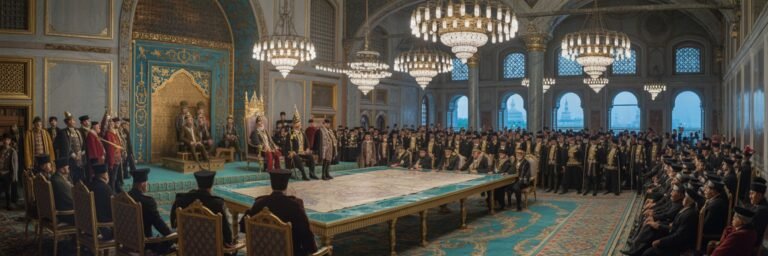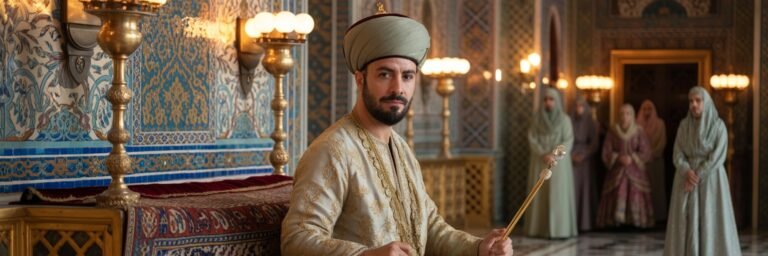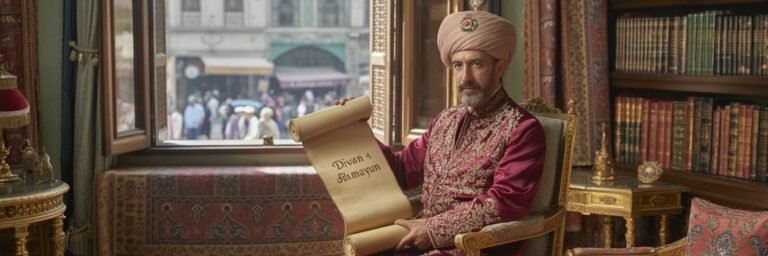INTRODUCTION
Untangling the skeins of time, we are transported to the heart of the medieval world, where we find ourselves in the midst of the sprawling Ottoman Empire. Here, amid the clash of armies and the churning wheels of political machinations, emerged an intricate tapestry of life—rich in detail, deeply diverse and resonating with echoes of a past which seems both near yet distant. This society, thriving upon the blend of multiple cultures and religions, painted a vivid life for its denizens. Against the backdrop of unparalleled statecraft, power and territoriality interests, the daily existence of the people of the Ottoman Empire was a compelling narrative unto itself. As we delve into this fascinating narrative, we must caution that the contours of the ‘everyday’ are not easily discernible, and are far from uniform, for they were continually punctuated by social, economic, and religious hierarchies.
HISTORICAL BACKGROUND
The Ottoman Empire, a mighty dominion lasting from 1299 to 1922, covered vast tracts of Europe, Asia, and Africa. Osman I, a Seljuk Turk leader, founded the empire, which was named after him. With Constantinople’s conquest in 1453 under the reign of Mehmet II, the empire’s scope and influence expanded, embracing numerous cultures, languages, religions under the canopy of its supremacy. The empire reached the peak of its military and political power in the 16th century, under Sultan Suleiman the Magnificent. This period also witnessed the flourishing of arts, architecture, and literature, adding impressive dimensions to the everyday life of the populace.
THEORIES AND INTERPRETATIONS
Interpreting everyday life in the Ottoman Empire is like assembling a kaleidoscope; each prism reflecting varied aspects, all held together by a collective history and experience. For instance, historians like Bernard Lewis and Halil Inalcik offer insights into the empire’s multi-lingualism and multi-religious character, which greatly impacted daily life, from the marketplace’s cacophony to scholarly studies in medreses (Islamic theological schools).
An alternative view presented by historian Donald Quataert focuses on the economic processes which significantly transformed the empire’s rural and agrarian societies. From sharecrop farming to artisanal labor, from manufacturing to trading networks, economic activities became the lifeblood of Ottoman society, making it not just a military empire, but an economic empire as well.
MYSTERIES AND CONTROVERSIES
The Ottoman Empire’s storied past is etched with mysteries and controversies, particularly around the societal structure. Historically, representation of Ottoman women has been shrouded in stereotypes, painting them as passive figures veiled and secluded in harems. However, historians like Leslie Peirce and Fatma Müge Göçek argue that this is a skewed interpretation, projecting Western biases. Evidence suggests Ottoman women, though subjected to patriarchy, were actively engaged in socio-economic life. Some even held considerable power and influence, like Kösem Sultan, who served as a regent during her sons’ rule, or the multiple businesswomen who were an integral part of the thriving Bazaars.
SYMBOLISM AND CULTURAL SIGNIFICANCE
Delving into the cultural labyrinth of the Ottoman Empire, the Hammams (baths), coffee houses, bazaars, and religious institutions emerge as significant symbols. Hammams signified not just hygiene, but also socialization, gender engagement, business dialogues, and even venues for childbirth rituals. Coffee houses became intellectual hubs, where literature, politics, and philosophy percolated alongside the strong Turkish coffee. Dynamic bazaars were snapshots of the economic, religious, and cultural diversity.
MODERN INVESTIGATIONS
Modern historiography on the Ottoman Empire employs an interdisciplinary approach, utilizing sociocultural anthropology, archaeology, script analysis, along with scrutinizing empirical and qualitative data from archival sources. Historians Catherine Asher and Cynthia Talbot employ methods from oral histories and folklores to trace cultural nuances of Ottoman society. Moreover, retrieval of artifacts and exploration of architectural evidence, guided by archaeological studies, play a significant role in piecing together the everyday life scenario; coalitions between historians, architects, archaeologists thus aid our understanding of the past.
LEGACY AND CONCLUSION
The legacy of the Ottoman Empire is a polyphonic one, resonating not just in the realm of political history but also vividly shaping the cultural landscape of contemporary Turkey and beyond. The extraordinary architecture of the Hagia Sophia, the sultanic sartorial styles, the rich culinary traditions like the iconic baklava, Turkish tea, and mezze platters, and language influences are all enduring imprints of this empire.
Everyday life in the Ottoman Empire, hence, was a variegated mosaic, teeming with myriad cultures, traditions, languages, and activities. As an illustrious chapter in the annals of world history, the Ottoman Empire illuminates the tapestry of time, serving as a richly textured backdrop to the stories of its ordinary inhabitants—stories of resilience, cultural syncretism, and bustling everyday life that continues to captivate scholars and enthusiasts alike.
The Ottoman Empire’s mesmerizing narrative prompts us to comprehend that the ordinary and the everyday, often overlooked in grand historical narratives, are indeed extraordinary in their own right. For it is in the ordinary that we discern the soul of a society, thereby enriching our perception and understanding of a bygone era. The legacy of the Ottoman Empire is testament to this, underscoring how the echoes of the past continue to reverberate, informing the present and shaping the future.






